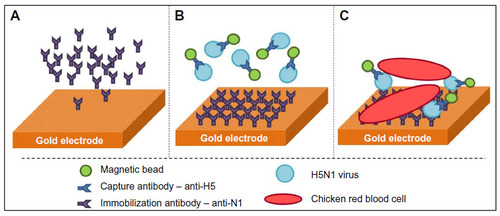Figures & data
Figure 3 Strategies for electrochemical biosensing of viral pathogens consist of four steps.

Figure 4 Impedance biosensor for measurement of immunoreaction coupled with red blood cell (RBC) amplification.

Register now or learn more
Open access
Figure 3 Strategies for electrochemical biosensing of viral pathogens consist of four steps.

Figure 4 Impedance biosensor for measurement of immunoreaction coupled with red blood cell (RBC) amplification.

People also read lists articles that other readers of this article have read.
Recommended articles lists articles that we recommend and is powered by our AI driven recommendation engine.
Cited by lists all citing articles based on Crossref citations.
Articles with the Crossref icon will open in a new tab.